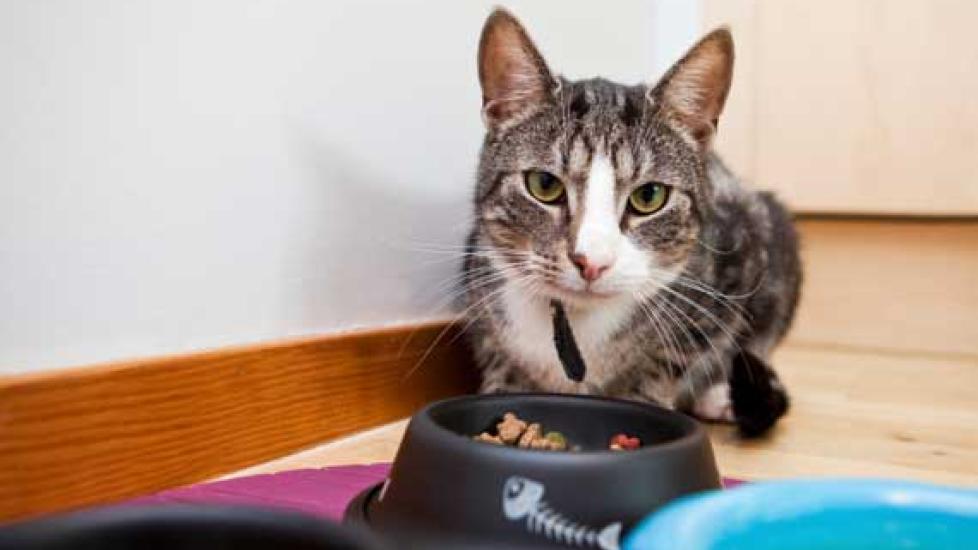Feeding Cats with Liver Disease
Your veterinarian has just informed you that your cat has liver disease. You want to do what’s best for your feline friend so that he can live comfortably for as long as possible. Your vet may have recommended medications to treat the underlying cause of the problem, if it has been identified. Proper nutrition is also vital.
It is important to understand the role the liver plays in health and what happens when it is not functioning properly. The liver has many functions, including:
- Absorption of food (through the digestion and transport of fats)
- Removal of the by-products of digestion (e.g., toxins such as ammonia)
- Production of proteins
- Blood clotting factors
- Albumin, which helps keep fluids within and transports substances through the circulatory system
- Hormones
- Maintenance of normal blood glucose (sugar) levels
Many disorders of the liver can ultimately damage the organ and reduce its function, including:
- Infections — bacterial, viral, fungal, protozoal, parasitic
- Toxins or medications
- Inflammatory processes — spread from other areas of the body, due to trauma, chemicals, or auto-immune disease
- Reduced blood flow to the liver — due to heart failure or a congenital abnormality
- Idiopathic — cause is unknown
Most liver disorders are progressive. Liver dysfunction and eventual failure will lead to the accumulation of toxins (causing nervous system and digestive tract abnormalities), the reduction of protein synthesis (resulting in leaky blood vessels and fluid accumulation and clotting problems), and low blood sugar levels.
Dietary therapy can help the liver to function as well as possible and reduce further damage to the liver. The goals of nutritional intervention are to:
- Provide adequate energy in the form of high quality protein
- Reduce sodium to lessen fluid retention
- Increase antioxidants to protect cells from further damage
- Reduce the symptoms of Hepatic Encephalopathy, if present — a result of the accumulation of ammonia which is toxic to the brain.
The first step is to change your cat’s diet to a formula that meets these characteristics. There are several types of brands to choose from depending on a cat’s specific needs. A home prepared diet made from a recipe put together by a veterinary nutritionist familiar with your cat’s case is another option for owners willing to cook for their cats. Your veterinarian can help you determine which diet is best. In general, diets for cats with liver disease should have:
- High quality protein to reduce the workload on the liver
- Highly digestible carbohydrates
- High quality fats
- Added antioxidants such as vitamin E, vitamin C and selenium to combat oxidative stress
It is always important to make dietary changes slowly to increase the chances of the cat accepting the new food. If the cat is unwilling to eat anything, a feeding tube should be placed to avoid a negative energy state and the development or worsening of hepatic lipidosis (fatty liver syndrome).
If hepatic encephalopathy is present, a diet with low protein levels can help reduce the production of ammonia (a by-product of protein digestion). When ascites (fluid retention in the abdomen) is a problem, a very low sodium diet will help prevent worsening of the condition. Owners need to work closely with their veterinarians not only when cats are first diagnosed with liver disease, but at regular intervals to continue to provide the nutrition necessary for the longest, healthiest life possible.
Stay tuned for the next installment on Nutrition Nuggets for Cats — Nutritional Supplements for Cats with Liver Disease.

Dr. Jennifer Coates
Image: Thinkstock
